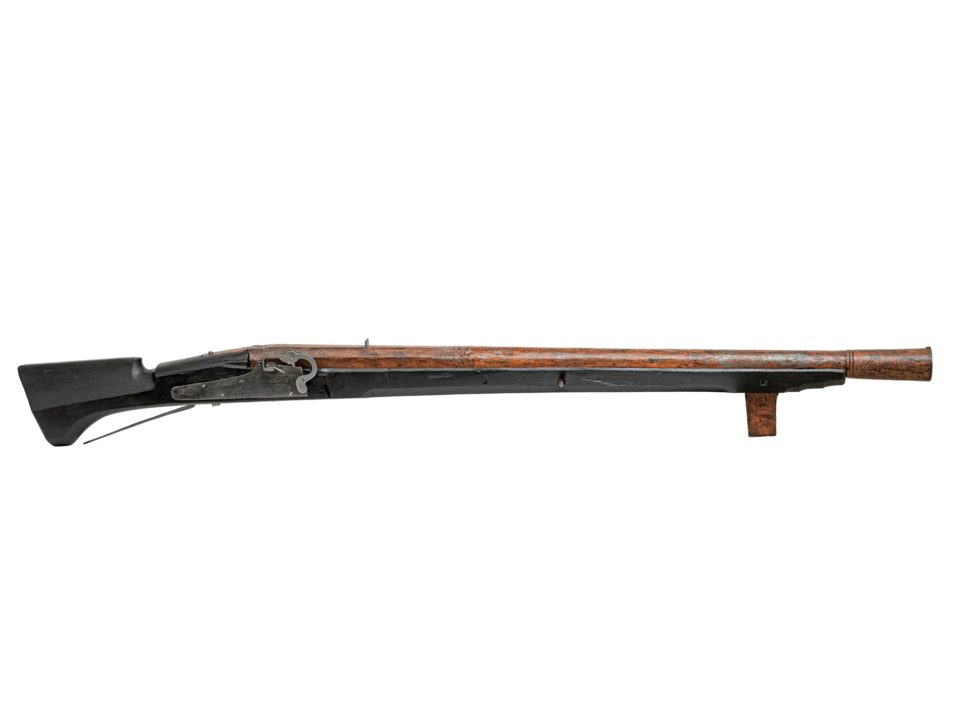Wall guns are muzzleloaders that can be loaded from the front with bullets or gunpowder. They are unusually long, large-calibre weapons. As they could weigh up to 32 kg, they had to be propped up on, and fired from, walls and arrow slits. They have a distinctive hook which absorbs the recoil from the gun. This hook is forged onto the underside of the barrel.
Discover the
Universalmuseum Joanneum
Graz
Styria
Closed

More than 85 animal species from all continents live in the Herberstein Animal World.
Universalmuseum
Joanneum
Back to Universalmuseum Joanneum
Styrian Armoury > Discover > Collection > Artillery and accessories > Matchlock muzzle-loading wall gun
Matchlock muzzle-loading wall gun - Harquebus
Styria, 16th century

Image Credits
Of the 369 “Doppelhaken” matchlock wall guns (harquebuses) currently in the armoury, the locks (matchlock, snap matchlock, wheel lock) and almost all of the shafts were made in Styrian workshops. They are generally made of beech wood, with cherry wood also being used in some harquebuses. Often weighing 20kg, instead of the hook these rifles have a wrought iron fork with a round pivot, giving the otherwise rather cumbersome weapon a significant mobility. They were therefore well suited for arming “Navaren” guard ships on the Drava, Sava and Danube rivers.
The barrels of most of the harquebuses stored at the armoury are consistently octagonal with a calibre of 21mm on average; in some rifles only the chamber section is octagonal, while the front barrel is round. These barrels, which are probably older, have a reddish protective layer (an anti-rust coating), while their barrel lock has clearly been welded and not, as was later customary, provided with a breech plug.


















